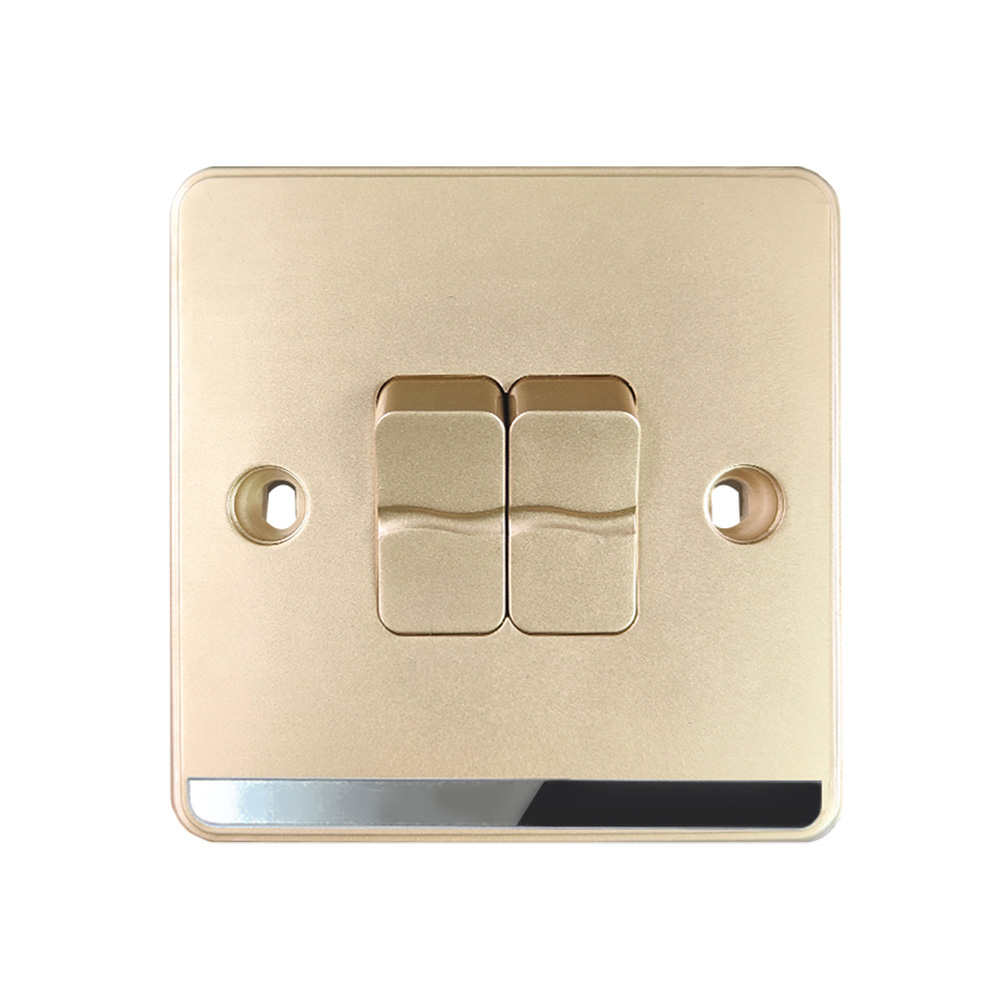Electrical wall switches are an essential component in modern homes and commercial buildings, providing a simple and convenient way to control lighting and other electrical devices. These switches are designed to complete or interrupt the flow of electricity in a circuit, allowing users to turn lights, fans, or appliances on and off safely and efficiently. With a variety of designs, materials, and installation options, wall switches combine functionality with aesthetic appeal.
One of the main advantages of electrical wall switches is their ease of use. Simple toggle or rocker switches allow for quick control of electrical devices, while more advanced models offer features such as dimming, multi-way control, or smart connectivity. Multi-way switches enable a single device, like a ceiling light, to be controlled from multiple locations, which is convenient for large rooms, hallways, or staircases. Smart switches, compatible with wireless networks, allow users to operate lights remotely using a smartphone or voice commands, enhancing convenience and energy management.
Durability and safety are key considerations in wall switch design. High-quality switches are made from materials such as flame-retardant plastics and corrosion-resistant metals to ensure long-term reliability. Electrical switches are also designed to meet safety standards, preventing short circuits, overheating, or accidental electric shocks. Many switches include protective features such as insulated terminals, child-proof covers, or surge protection to enhance user safety.
Installation and maintenance of electrical wall switches are generally straightforward for qualified professionals. Standard switches are mounted on electrical boxes and connected to power and load wires using secure terminals. Proper installation ensures stable operation, prevents loose connections, and reduces the risk of electrical hazards. Maintenance typically involves occasional cleaning to remove dust and debris, checking for loose screws, and replacing worn-out switches to maintain good performance.
Design versatility is another factor contributing to the popularity of wall switches. They are available in various styles, colors, and finishes to match interior decor and personal preferences. Some switches feature modern small designs, while others offer decorative plates or customizable panels to complement a room’s aesthetic. The size and shape of switches can also vary, allowing for easy integration into tight spaces or unusual wall layouts.
Electrical wall switches are used in a wide range of applications beyond lighting control. They can operate ceiling fans, exhaust systems, heaters, and other electrical devices, making them an integral part of energy management in residential and commercial settings. Programmable or timer-controlled switches further expand their functionality, allowing devices to turn on or off at specific times for convenience and energy efficiency.
In addition to practical functionality, wall switches contribute to energy conservation. By providing easy access to control electrical devices, switches encourage users to turn off lights and appliances when not in use. Smart switches with scheduling and remote access features can reduce unnecessary energy consumption, helping households and businesses save on electricity costs.
Overall, electrical wall switches are essential for modern electrical systems, offering a combination of safety, convenience, and design flexibility. From basic toggle switches to advanced smart and programmable models, they provide reliable control over lighting and other devices in homes and workplaces. By choosing switches that match functional requirements and aesthetic preferences, users can improve both the efficiency and style of their electrical systems.




 عربى
عربى